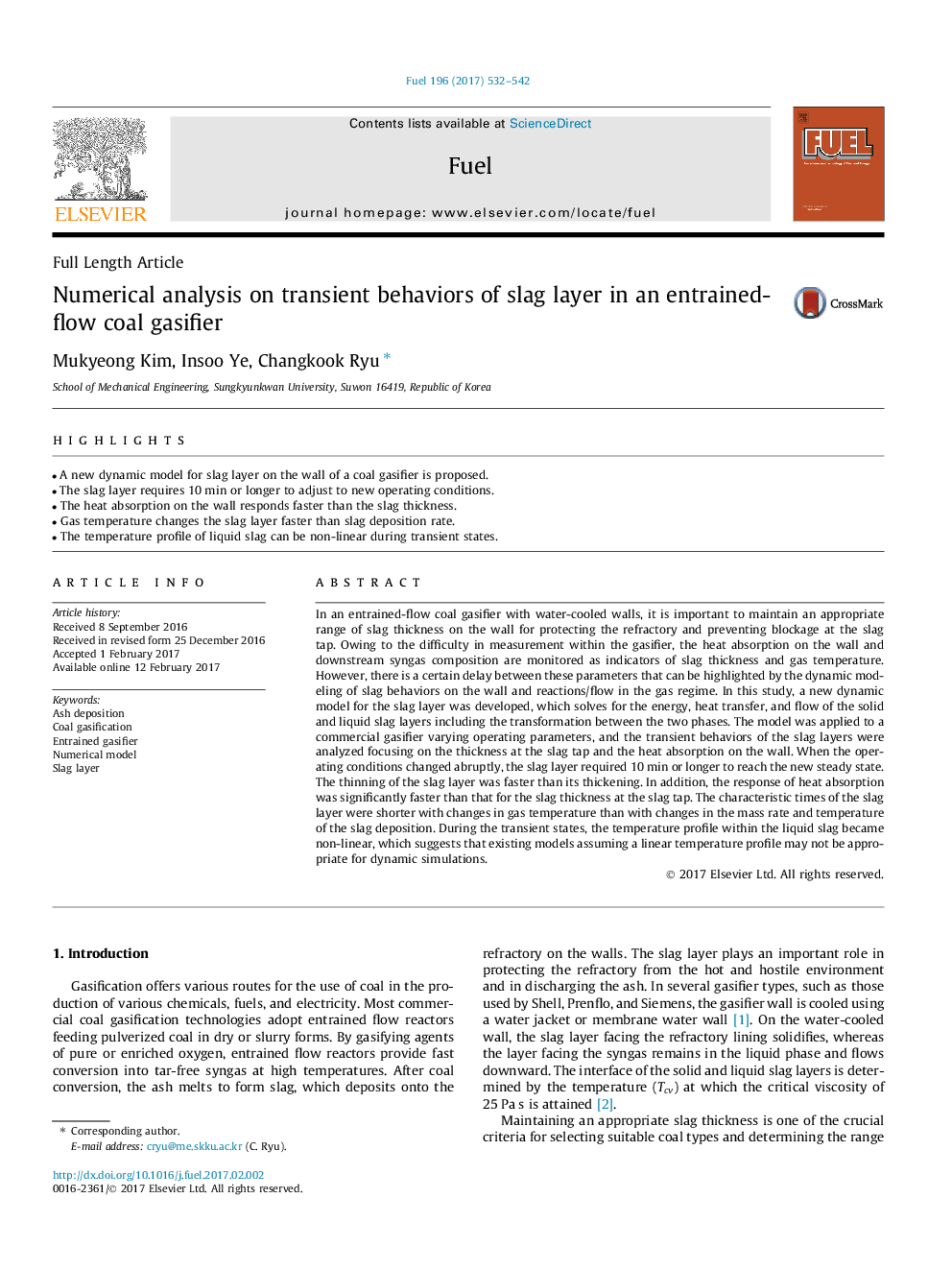| کد مقاله | کد نشریه | سال انتشار | مقاله انگلیسی | نسخه تمام متن |
|---|---|---|---|---|
| 6475132 | 1424968 | 2017 | 11 صفحه PDF | دانلود رایگان |
- A new dynamic model for slag layer on the wall of a coal gasifier is proposed.
- The slag layer requires 10Â min or longer to adjust to new operating conditions.
- The heat absorption on the wall responds faster than the slag thickness.
- Gas temperature changes the slag layer faster than slag deposition rate.
- The temperature profile of liquid slag can be non-linear during transient states.
In an entrained-flow coal gasifier with water-cooled walls, it is important to maintain an appropriate range of slag thickness on the wall for protecting the refractory and preventing blockage at the slag tap. Owing to the difficulty in measurement within the gasifier, the heat absorption on the wall and downstream syngas composition are monitored as indicators of slag thickness and gas temperature. However, there is a certain delay between these parameters that can be highlighted by the dynamic modeling of slag behaviors on the wall and reactions/flow in the gas regime. In this study, a new dynamic model for the slag layer was developed, which solves for the energy, heat transfer, and flow of the solid and liquid slag layers including the transformation between the two phases. The model was applied to a commercial gasifier varying operating parameters, and the transient behaviors of the slag layers were analyzed focusing on the thickness at the slag tap and the heat absorption on the wall. When the operating conditions changed abruptly, the slag layer required 10Â min or longer to reach the new steady state. The thinning of the slag layer was faster than its thickening. In addition, the response of heat absorption was significantly faster than that for the slag thickness at the slag tap. The characteristic times of the slag layer were shorter with changes in gas temperature than with changes in the mass rate and temperature of the slag deposition. During the transient states, the temperature profile within the liquid slag became non-linear, which suggests that existing models assuming a linear temperature profile may not be appropriate for dynamic simulations.
Journal: Fuel - Volume 196, 15 May 2017, Pages 532-542
